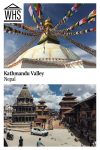Kathmandu Valley
By Hailey Briggs
What is Kathmandu Valley?
Kathmandu Valley lies in the foothills of the Himalayan mountains in central Nepal. The valley is alive with bustling energy, millions of people, and the highest population density in Nepal. The three most-visited cities in the valley are Kathmandu, Lalitpur (formerly Patan), and Bhaktapur. All three of them contain the historic cultural monuments that make Kathmandu Valley so significant.
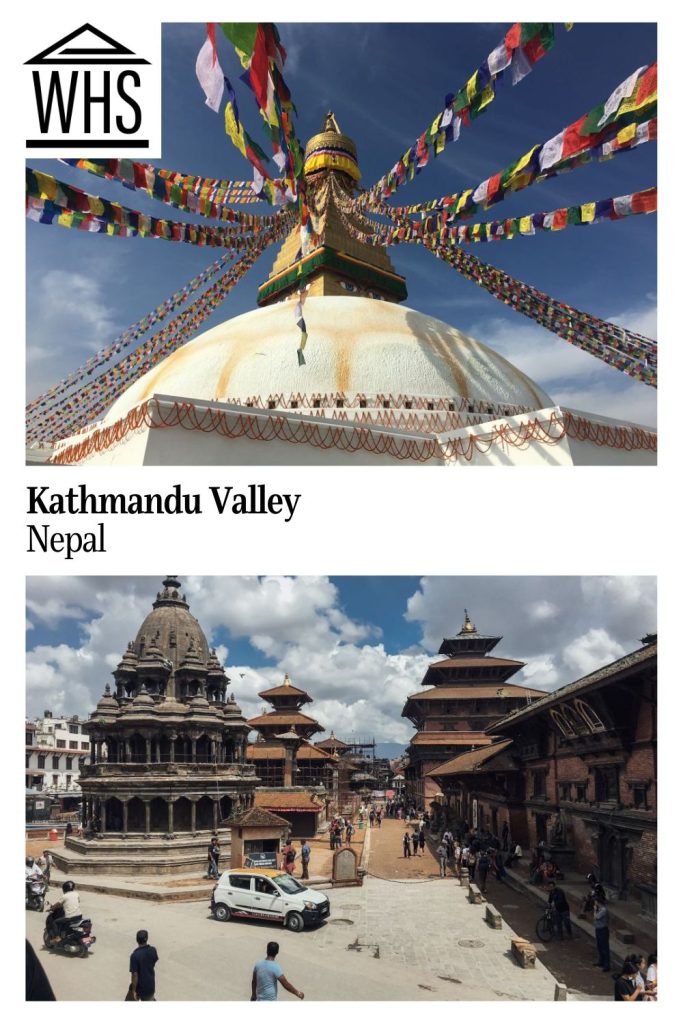
Disclosure: This article contains affiliate links. Making a purchase through an affiliate link will mean a small commission for this website. This will not affect your price. Privacy policy.
Why is Kathmandu Valley a UNESCO World Heritage site?
Kathmandu became a UNESCO World Heritage site in 1979 in the cultural category. The entire valley was designated because of seven important monuments spread throughout it that blend Hinduism, Buddhism, and one of Nepal’s oldest ethnic groups, the Newaris.
The seven monuments are:
- Boudhanath, a Buddhist stupa
- Swayambhu, a Buddhist stupa
- Kathmandu Durbar Square, a former palace
- Patan Durbar Square
- Bhaktapur Durbar Square
- Pashupatinath, a Hindu temple
- Changu Narayan, a Hindu temple
The oldest of these monuments, Swayambhu Stupa, dates back to 460 AD. All of them hold incredible religious significance historically and still today. According to UNESCO, these seven sites are a manifestation of the culture of the Newars, who settled here over a two-thousand-year period. In their unique society, “the coexistence and amalgamation of Hinduism and Buddhism with animist rituals and Tantrism is considered unique.”
These monuments are unique architecturally as well; they are “exceptional architectural typologies, ensembles and urban fabric illustrating the highly developed culture of the Valley.”
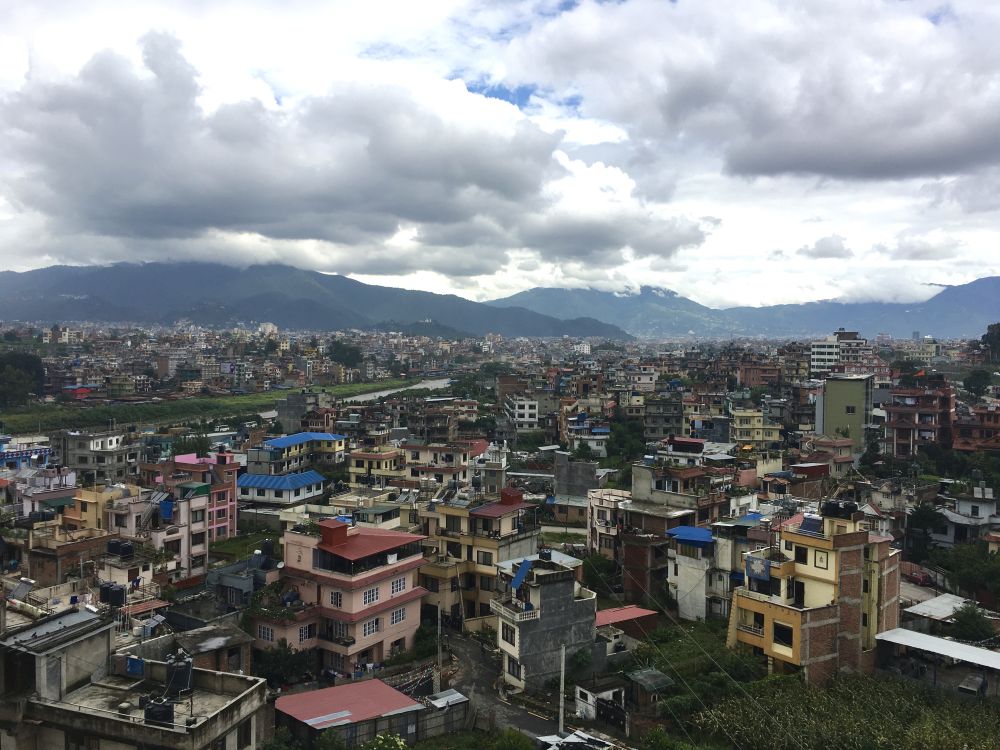
What can you expect on a visit to Kathmandu Valley?
Kathmandu Valley is best described as beautiful chaos. The first thing you need to expect when arriving is a culture shock. Kathmandu is a sensory adventure made even more special by the deep spiritual and cultural experiences. I spent seven months living in Lalitpur and visited each of the elements of this World Heritage site several times.
Nepal suffered from a devastating earthquake in 2015 that damaged a lot of Kathmandu Valley’s important sites. Large portions of them remain intact, and there have been extensive projects to rebuild them to their exact likeness since 2016. However, you should expect to see some damage even 10 years later.
Here’s a breakdown of what to expect from each of the seven sites:
1. Boudhanath Stupa
Out of all Kathmandu Valley’s monuments, Boudhanath Stupa was my favourite. It is on the edge of Kathmandu’s urban limits, north of the tourist centre. Boudhanath is the largest spherical stupa in the world. It is a large white dome with the “all-seeing eyes” of Buddha painted on all four sides, colourful prayer flags dancing in the wind, and prayer wheels lining its outer wall.
Boudhanath Stupa is an important pilgrimage site for Tibetan and Nepalese Buddhists. You will notice monks and other religious practitioners circling the temple and lighting butter candles to symbolize the illumination of wisdom.
The stupa sits in a circular courtyard with shops, temples, and restaurants. I highly recommend eating a traditional Nepali meal at one of the rooftop restaurants overlooking the stunning stupa below.
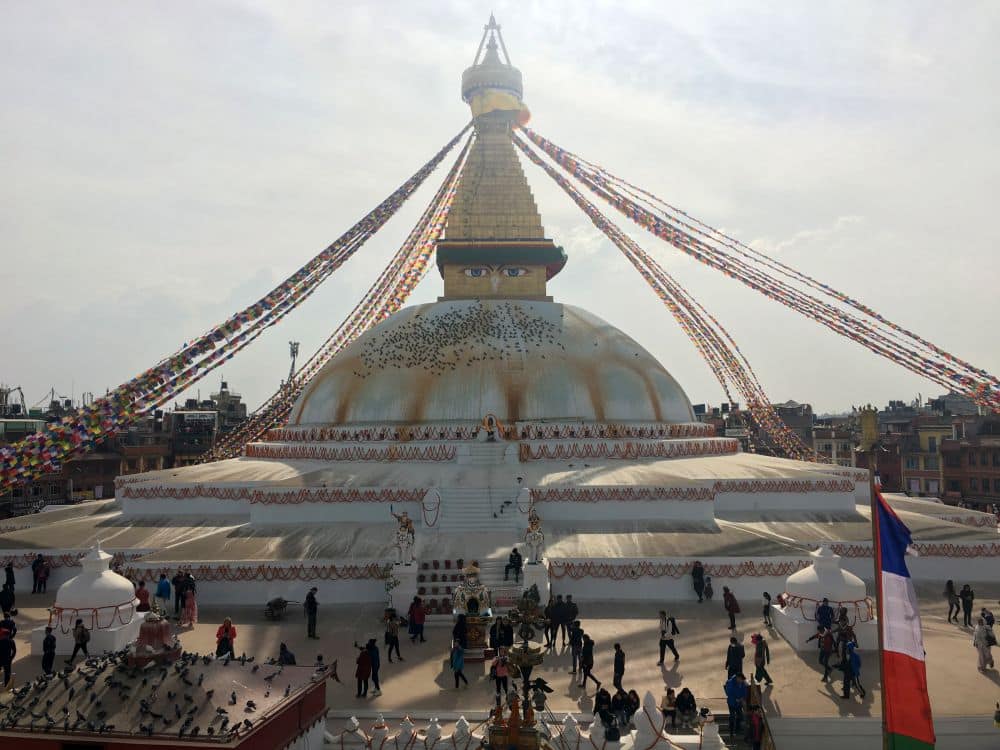
2. Swayambhu Stupa
Also known as the Monkey Temple, Swayambhu is perched high on one of the hills that borders the Kathmandu Valley. It has one of the best viewpoints overlooking the city, and on a clear day you can see the white-peaked Himalayan Mountains. Many people say it looks like a smaller version of Boudhanath with several small temples and shrines around it.
Swayambhu gets its nickname “Monkey Temple” because of the thousands of monkeys that roam the stupa. I have had my fair share of these mischievous creatures and opted to leave early because of how many there were and how aggressive they can get. The monkeys are known for stealing from tourists, and you don’t want to bring any food with you, even if it is zipped tightly in your bag.
3. Kathmandu Durbar Square
Kathmandu Durbar Square was once a royal palace and is now an entire ancient square filled with temples and the residence of the living goddess Kumari. There are temples dedicated to different Hindu gods and goddesses, like Lord Shiva, Taleju Bhawani, Vishnu, and Bhagwati. The square is also filled with local vendors selling handicrafts and souvenirs laid out on blankets.
Kathmandu Durbar Square is a 20-minute walk from the tourist centre, Thamel. You can expect lots of people to approach you offering to give you a tour for a price. They can be quite persistent, so if you are not interested, try not to engage or make eye contact. Be wary of people trying to offer you free information because common scams like this exist to get you to pay out afterward.
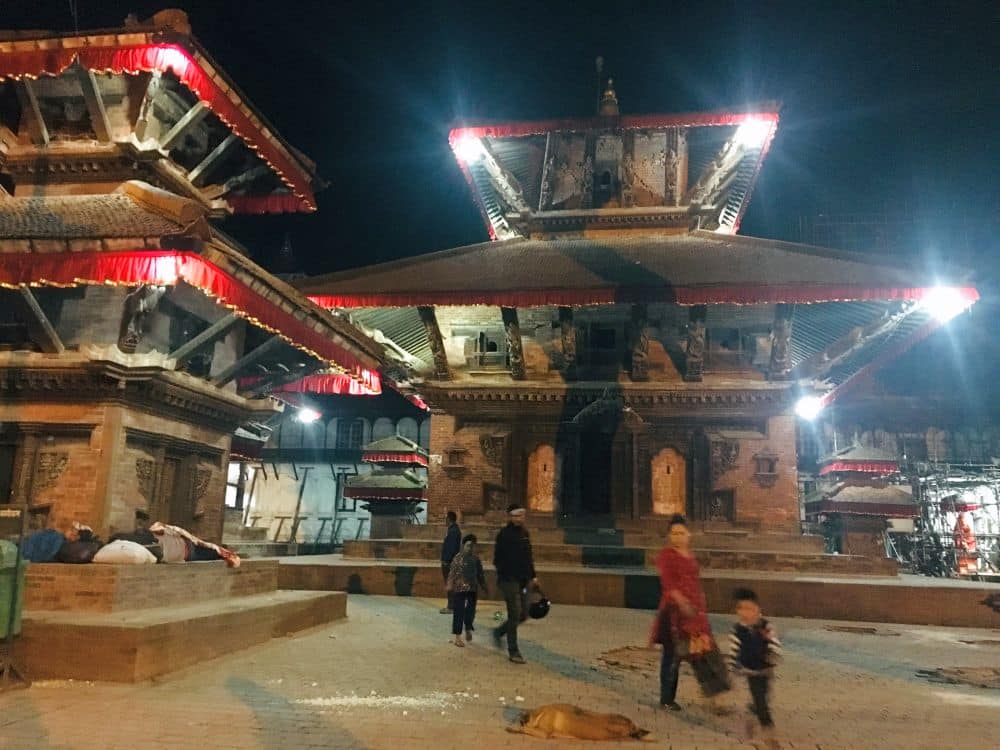
4. Patan Durbar Square
Patan Durbar Square is in Lalitpur, south of Kathmandu, although the two cities blend together to feel like one. This was my favourite of the three durbar squares in the valley. Patan’s square is more peaceful. It has wonderful temples as well, but my favourite part is the maze of ancient streets spreading out from the square. Patan is the oldest part of Kathmandu Valley, and the old architecture is reflected in its narrow streets.
Patan Durbar Square is an affordable taxi ride from Kathmandu’s tourist hub. Make sure to visit the square’s museum to see over 1000 artifacts featuring intricate pillar carvings, bronze statues, and a beautiful courtyard. If possible, I also recommend visiting at night because the square is stunning when lit up. My favorite thing to do there was to sit amongst locals at the tiny tea stands.
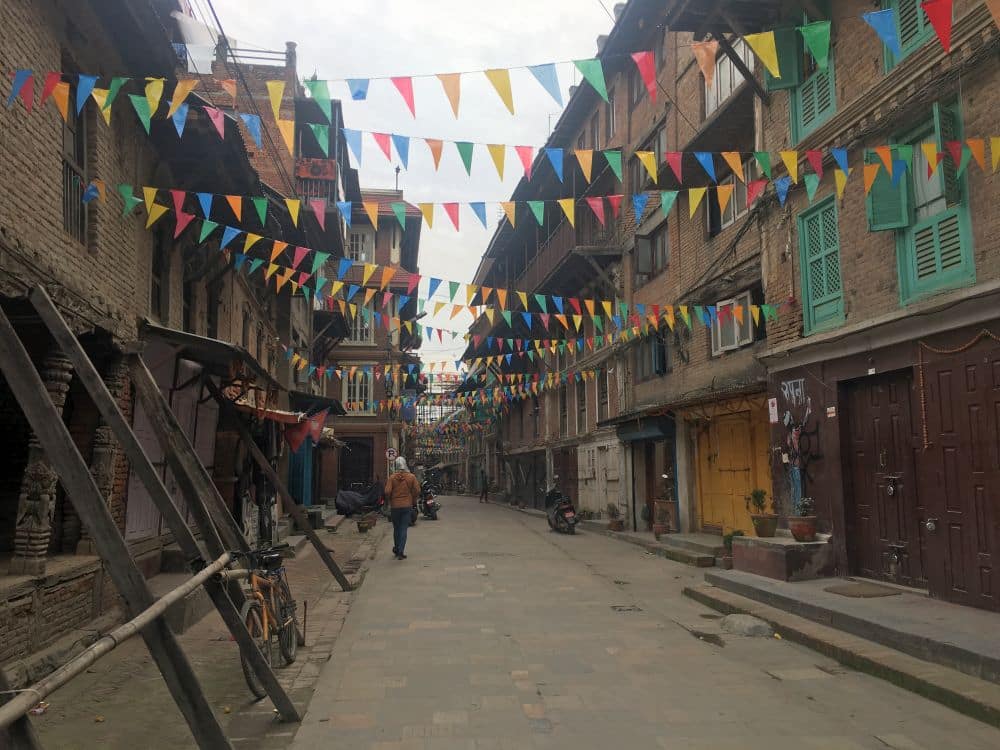
5. Bhaktapur Durbar Square
Bhaktakpur is known for its pottery squares. Pottery is an important handicraft in Nepali history and culture. It is particularly popular in Bhaktapur because of the signature black clay that is known as the “clay of the gods.” The temples and buildings inside Bhaktapur’s square are great examples of traditional Newar architecture with intricate carvings and pagoda-style roofs.
Bhaktapur is a 30-45-minute drive outside of Kathmandu’s centre, so I highly recommend visiting it on a tour that combines it with a visit to the beautiful countryside in Nagarkot.
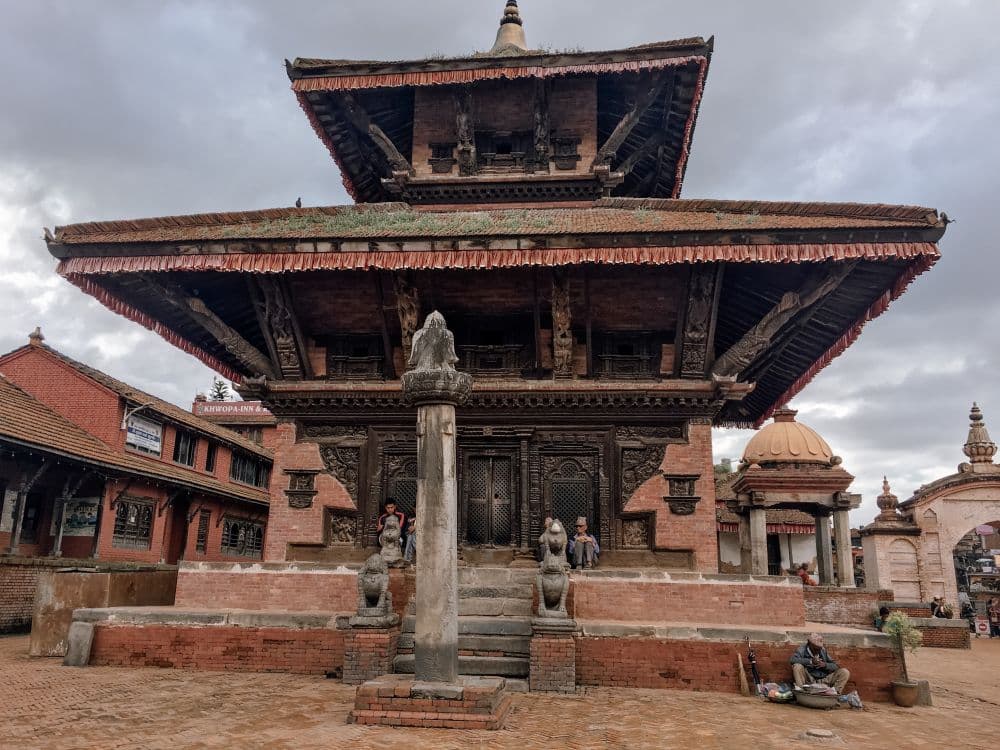
6. Pashupatinath Temple
Pashupatinath is one of the holiest Hindu temples in the world. It is dedicated to Lord Shiva and is an important pilgrimage site. Pashupatinath has a large temple complex with 518 mini temples and pagodas. It is located on the Bagmati River, where holy funeral cremations happen 24/7.
Holy men called sadhus are found inside the complex, dressed in orange robes and smeared with ash. They often offer tourists a chance to take photos with them or interact for a small price.
The main temple is particularly beautiful, with a golden roof, silver doors, and thousands of flowers. Only practicing Hindus can enter the main temple, but visitors are allowed to explore the temple complex. I highly recommend visiting Pashupatinath on a guided tour so you can understand the depth behind the cremations and ritual ceremonies you witness, but also to avoid any risks of accidental disrespect.
7. Changu Narayan
Changu Narayan is the oldest Hindu temple still in use and is dedicated to Lord Vishnu. It is located on the hilltop of Changu in the Bhaktapur district. It is a large pagoda-style structure with beautiful carvings and smaller shrines and statues surrounding it.
Changu is about 12 km (7.5 mi) outside of Kathmandu and is quiet compared to the bustle of the big city. You’ll glimpse the more rural side of life in the valley. A taxi ride is the simplest way to get there, or you can take a bus to Bhaktapur and a microbus to Changu Narayan from there.
Alternatively, take a day tour that includes a trek through the countryside to Changu Narayan.
Is Kathmandu Valley worth visiting?
It is absolutely worth visiting! I even recommend making the trip all the way to Nepal simply for what Kathmandu has to offer. After seven months of living there, I was still discovering new things every day.
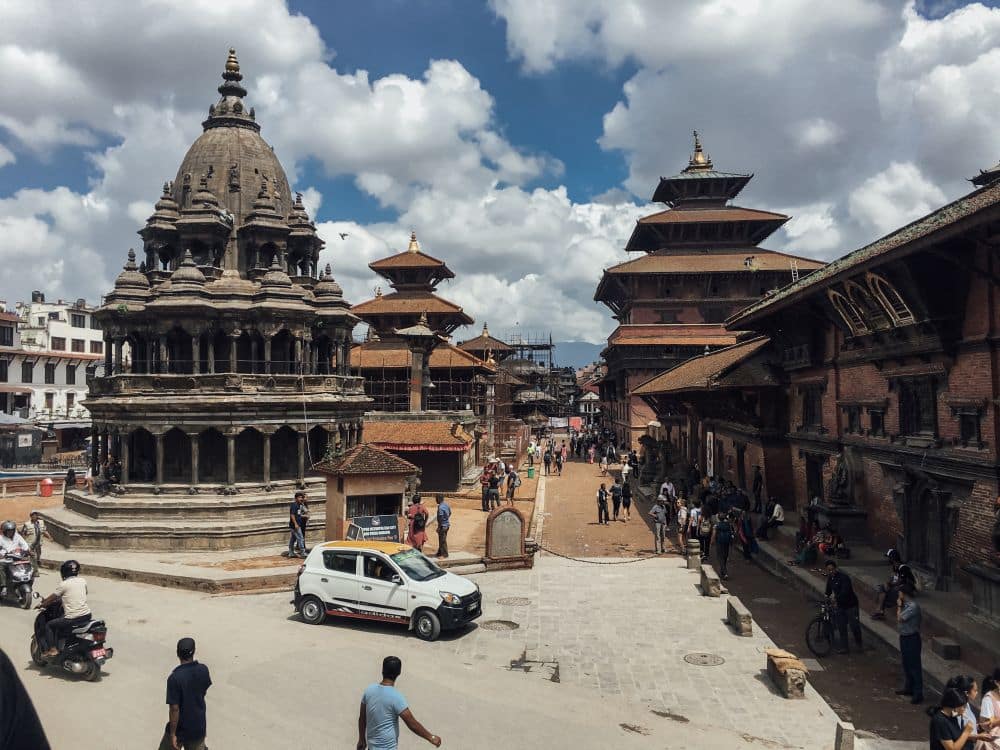
You could easily spend an entire week or more exploring the valley and its surrounding attractions like Namo Buddha or Pokhara. However, I recommend spending at least four days in the valley to see all of the seven monuments. If you’re going to Nepal for some trekking in the mountains, you’ll arrive in the valley in any case, so why not take some time to see Kathmandu too?
What sorts of travelers would like Kathmandu Valley?
Kathmandu Valley is for travellers fascinated by other cultures, religions, and history. It is for people who love to dive out of their comfort zones and immerse themselves in an environment unlike anything they have experienced. If you are on a spiritual journey, it can make for an extraordinary trip.
Here is a map of Kathmandu with the seven locations marked on it:
Tips for visiting Kathmandu Valley
After living in this wonderfully chaotic valley, here are my best tips for making the most of your trip to Kathmandu:
- Be wary of scams and pickpockets.
- Bring a carbon-filtered mask or at least a scarf to cover your face. Kathmandu has some of the highest pollution rates in the world.
- Always barter with taxi drivers. They will charge tourists double or even sometimes triple the normal amounts.
- Don’t drink the water or brush your teeth with it.
- Try to visit at least one of the durbar squares after dark to see the temples glowing at night.
- Allow an extra day to explore the natural scenery outside of Kathmandu Valley, like Namo Buddha or Nagarkot.
- Follow the flow of other pedestrians when crossing the street. Crossing streets in Kathmandu is one of the most hectic experiences a person can have. You have to walk directly into moving traffic, with motorbikes and cars weaving around you. This is easier if you can follow locals doing it.
- Avoid Monkey Temple (Swayambhu) if you are wary of monkeys. Or consider talking to a travel doctor about getting the rabies vaccine before going (I ended up getting them in Nepal after some doctors recommended it).
- Stay on the outskirts of Thamel or in Patan to avoid some of the chaos. I personally recommend staying in Patan and then budgeting for taxis into Thamel. Patan (a.k.a. Lalitpur) is south of Thamel on the other side of the Bagmati River.
Book accommodations in Lalitpur in Kathmandu. Use the map function to choose more specifically by location.
Also consider adding visits to Nepal’s other UNESCO sites to your plans: they are Lumbini, the birthplace of Buddha; Sagarmatha National Park in the Himalayas; and Chitwan National Park, a subtropical nature reserve.
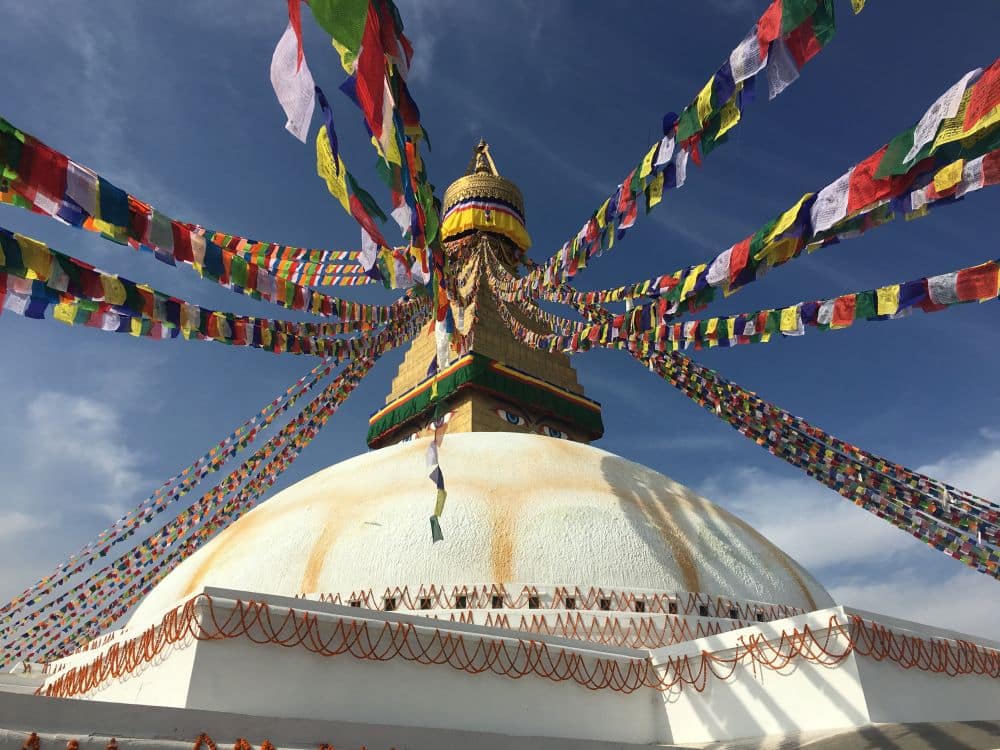
Where is Kathmandu Valley?
Almost all international flights into Nepal arrive at Kathmandu Airport. Kathmandu Valley is in Central Nepal, about 8 hours from Pokhara, 6 hours from Chitwan National Park, and 7 hours from Langtang.
I highly recommend taking taxis to travel between all the heritage sites. The local buses are incredibly overpacked, and there are no clear bus routes. You need to ask locals which bus to get onto, run onto it (sometimes they don’t even fully stop – they slow to a rolling passby), and then get off as close to where you’re going as you can figure out. It is an adventure if you like that!
The other alternative to taxis, if you are a solo traveller, is the app called Pathao. It is almost exactly like Uber except for catching a ride on the back of a motorcycle/scooter. I rode on the back of many motorcycles in Kathmandu traffic, and it was a thrilling experience.
For more information about Kathmandu Valley, see the Nepal Tourism Board’s website.
Have you been to Kathmandu? If so, do you have any additional information or advice about this UNESCO World Heritage site? Please add your comments below!

